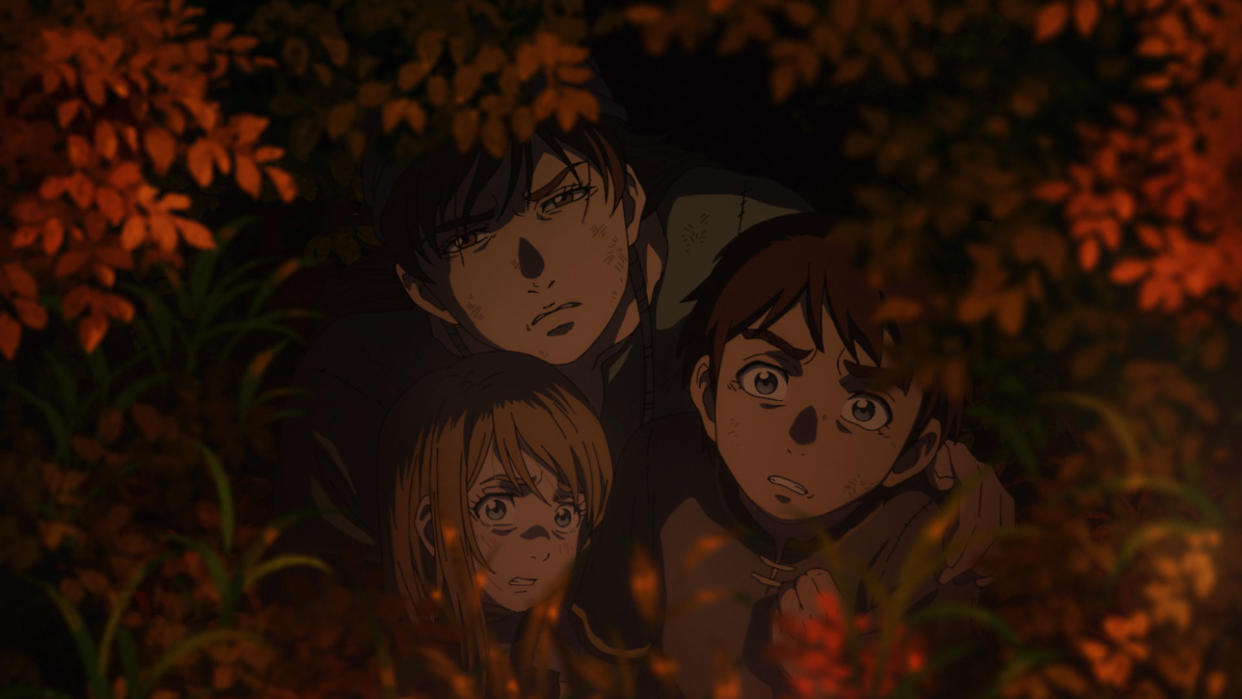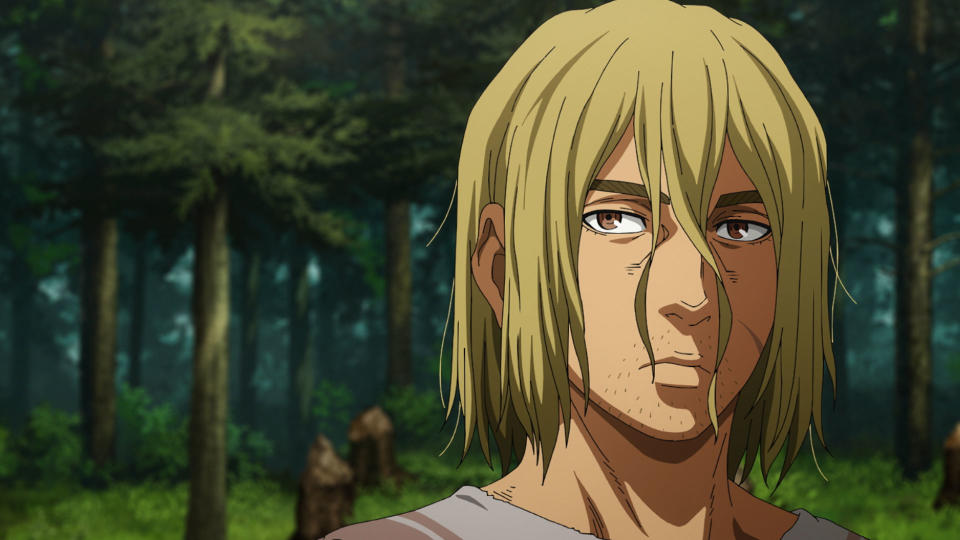‘Vinland Saga’ Turned Gory Viking Battles Into a Pacifist’s Story in Season 2

Anime and manga are filled with stories that are supposedly anti-violence but still end up glorifying violence with undeniably cool and exciting fight scenes. Even heavy hitters like “Gundam,” which deals with heavy themes of war crimes, genocide, and the psychological effect of war on children, have pretty badass robot action that leads to huge toy sales of said war machines. According to “Vinland Saga” author Makoto Yukimura, it is “when a manga becomes so violent the artist wants to quit writing, that is considered a success in our industry.”
Yukimura’s magnum opus “Vinland Saga” and its anime adaptation by WIT Studio and now Studio MAPPA were this way first, giving audiences exhilarating Viking fight scenes and gory battles. But that changed by the time of the Slave Arc, which the anime series’ second season adapts. That arc turns the entire story on its head, showing the futility, cruelty, and pointlessness of war and violence through the eyes of a protagonist who decides to walk away from the Viking way of life and become a pacifist.
More from IndieWire
“I feel like it’s our responsibility to go beyond creating excuses to accept violence in media,” Yukimura told IndieWire during his first visit to the U.S. for San Diego Comic-Con. “In our current state of the world, we always make up reasons to say that violence is actually self-defense. So I wanted a character who doesn’t allow such excuses within himself, and that was the start of ‘Vinland Saga.'”
This is why Yukimura remains so surprised that his manga got a beloved anime adaptation (currently streaming on Netflix and Crunchyroll), as he did not think it was “everybody’s cup of tea.” A lot of the manga that get anime adaptations are ones with mass appeal, so many of them end up feeling somewhat formulaic — not unlike Hollywood blockbusters. But as Yukimura points out, his manga is neither “flashy nor really cute.” It is a slow-burn, hyper-violent story we don’t see often anymore (but was everywhere in the ’80s and ’90s), which then pivots into a methodical, slow character drama that renounces the very violence that attracted a large part of the audience in the first place. “I really wanted to ask [the animation] team, is this going to be OK?” he adds.
Still, the “Vinland Saga” anime is a masterful adaptation that captures the nuances of the source material while adding layers of thematic resonance in a way only anime could deliver, like incredible voice performances and sound design, as well as stunning visuals. Yukimura is pretty pleased with the anime, to the point where he now looks back at some of his own writing with different eyes. “I now somewhat regret doing things that way,” he said. Though Yukimura is not directly involved, he did become a part of the anime by voicing a character in the first season. “I felt like it was a great experience to have and something that made me feel much closer to the production of the anime.”

One way “Vinland Saga” stands out from other manga period pieces is the story’s meticulous historical accuracy. The manga and the anime look stunning, with excruciating attention paid to the smallest details of the locations and the characters. For Yukimura, research was essential, but after devouring virtually every book on Vikings written in Japanese, he took things to another level. “I had to go to the actual locations where these things happened,” he explained. This meant going to Norway and seeing a Viking send-off in Oslo and visiting historical Viking sites in Iceland. As accurate as “Vinland Saga” is, however, one big mistake haunts Yukimura: Denmark. In an early manga chapter, we see a scene set in a Danish port surrounded by mountains, despite the fact that the Norse country is flat. “As a Japanese person, I couldn’t believe there was such a place with no mountains,” Yukimura recalled, laughing. “But when I actually visited Denmark, there wasn’t a single mountain, so I was really surprised.”
As accurate (Denmark excepted) as “Vinland Saga” is, this is a fictional story, and it is the way in which Yukimura fills the gaps in history books that provide most of the drama and entertainment. Main character Thorfinn, son of Thors, is based on a real person known as Thorfinn Karlsefni, an Icelandic explorer whose exploits are told in the “Saga of the Greelanders” and the “Saga of Eirik the Red.” For Yukimura, the idea of a Norseman who became an explorer far away from Europe proved too fascinating not to look into. “It made me wonder what kind of man would travel the complete opposite direction of Europe where the fight and the profits were,” the author said. “I assumed that he simply had to be a peace seeker that would rather avoid fighting, which made him want to travel away from the other Vikings. I decided to write a story about what someone like Thorfinn could be like if he became someone with a very peaceful personality.”
Filling in the blanks between the historical events we know is what makes his writing so thrilling. A similar thing happens with King Canute in the manga, a figure Western audiences may be familiar with due to his role in Netflix’s “Vikings Valhalla.” Yukimura not only gives Canute a completely original motivation and upbringing, but he brilliantly takes the factual death of Canute’s enemies in a relatively short period of time and turns it into a masterful and sinister plot. “How I interpret what has happened historically is kind of up to me,” Yukimura said. “Their course of action is set, but how and why they get there interests me.”
Though there is no official word on whether the “Vinland Saga” anime will get a Season 3, Yukimura is hard at work on ending the manga he started in 2005. When asked about the impact of the story’s success and the thought of his new chapters being adapted into animation, Yukimura is quick to dismiss any change in his original plan. “I always knew what I wanted to write about,” he explained. “If people don’t like what I write, I’ll just simply lose my job. But even beyond that, I always wanted to write a story about violence and happiness. And that has never changed throughout the course of the story, and at this point, there is no turning back.”
Seasons 1 and 2 of “Vinland Saga” are streaming on Netflix and Crunchyroll.
Best of IndieWire
Where to Watch This Week's New Movies, from 'Talk to Me' to 'Haunted Mansion'
Quentin Tarantino's Unmade Movies: 21 Projects the Filmmaker Almost Directed
Sign up for Indiewire's Newsletter. For the latest news, follow us on Facebook, Twitter, and Instagram.

 Yahoo News
Yahoo News 
